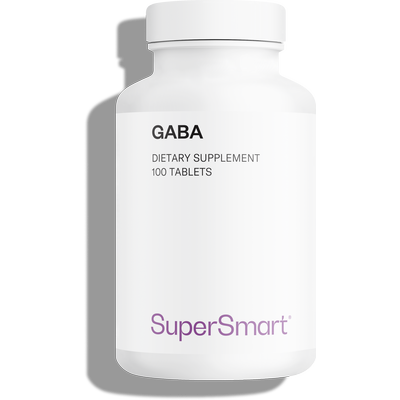28-12-2016
GABA, a major therapeutic breakthrough for type 1 diabetics
 The results of a new scientific study could mark a significant advance in the treatment of type 1 diabetes. Recently published in the prestigious scientific journalCell, the study has just revealed new therapeutic potential for gamma-amino-butyric acid, commonly known as GABA 1. This is a neurotransmitter hitherto known for its sedative and anxiolytic effects. A popular option for relieving stress and anxiety, GABA could now improve daily life for type 1 diabetics, due to its effects on insulin-secreting cells. Such is the view of a team of researchers from the Institute of Biology Valrose in Nice.
The results of a new scientific study could mark a significant advance in the treatment of type 1 diabetes. Recently published in the prestigious scientific journalCell, the study has just revealed new therapeutic potential for gamma-amino-butyric acid, commonly known as GABA 1. This is a neurotransmitter hitherto known for its sedative and anxiolytic effects. A popular option for relieving stress and anxiety, GABA could now improve daily life for type 1 diabetics, due to its effects on insulin-secreting cells. Such is the view of a team of researchers from the Institute of Biology Valrose in Nice.
Promising results for treating type 1 diabetics
Diabetes is a chronic disease characterised by a dysfunction in metabolic control of glycaemia – the level of sugar in the blood. There are two types of diabetes, each with very different causes. The most common is type 2 which is primarily linked to excess weight and a sedentary lifestyle2. A number of preventive and therapeutic solutions have been developed to counter this form of the disease, as detailed in our comprehensive article on diabetes. In the case of type 1 diabetes, advances in treatment have been more challenging due to the complexity of the disease. Type 1 diabetes is due to an auto-immune response which causes the pancreas to stop producing insulin. Without insulin, glucose accumulates in the blood, causing an increase in glycaemia. Since excess glucose can lead to health complications including cardiovascular problems, controlling blood sugar with insulin is essential. Type 1 diabetics thus require insulin therapy which consists of daily insulin injections. These new findings on GABA show that this neurotransmitter could induce regeneration of insulin-secreting cells.GABA for regenerating insulin-secreting cells
A number of research teams have for some years been trying to develop a treatment for type 1 diabetes that is less restrictive than insulin therapy. In July 2013, a team of French scientists revealed, in the journal Developmental Cell, that it may be possible to regenerate insulin-secreting cells: beta cells of the islets of Langerhans in the pancreas3. After several years’ research, these scientists have just identified GABA’s ability to induce the regeneration of beta cells from alpha cells also present in the islets of Langerhans. They succeeded in obtaining functional beta cells capable of treating type 1 diabetes in mice supplemented with GABA, as well as in cultures of human tissue treated with GABA. While the results of clinical trials are awaited, this major discovery brings new therapeutic hope to type 1 diabetics. If scientists succeed in reproducing these results in humans, supplementation with GABA could prove to be a less restrictive and more effective alternative to insulin therapy.> Sources :
(1) Patrick Collombat et al., "Long-Term GABA Administration Induces Alpha Cell-Mediated Beta-like Cell Neogenesis", Cell, December 1, 2016.
(2) Organizzazione mondiale della sanità, "Diabète, Aide-mémoire n°312", Aprile 2016.
(3) Patrick Collombat et al., "Adult Duct-Lining Cells Can Reprogram into β-like Cells Able to Counter Repeated Cycles of Toxin-Induced Diabetes", Developmental Cell, Volume 26, Versione 1, p86–100, Luglio 2013.
Order the nutrient mentioned in this article
Further reading
02-02-2015
L-tryptophan is one of eight essential amino acids in the human diet. It is the metabolic precursor of serotonin, melatonin and niacin. It was discovered...
Read more12-11-2013
The European Union has finally authorised a natural sleep aid: melatonin. If you ask me, those responsible for banning this natural substance for so many...
Read more29-03-2017
Do you find it difficult to get to sleep? Do you often wake up in the middle of the night? And then have trouble falling...
Read more© 1997-2025 Fondation pour le Libre Choix
All rights reserved
All rights reserved
Free
Thank you for visiting our site. Before you go
REGISTER WITHClub SuperSmart
And take advantage
of exclusive benefits:
of exclusive benefits:
- Free: our weekly science-based newsletter "Nutranews"
- Special offers for club members only


















